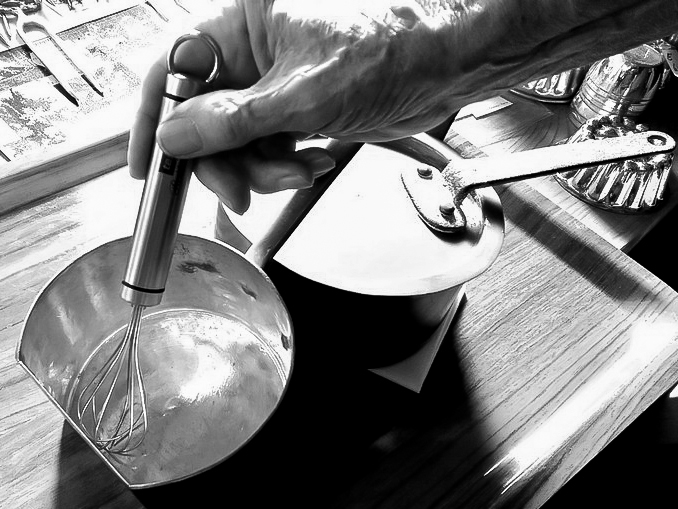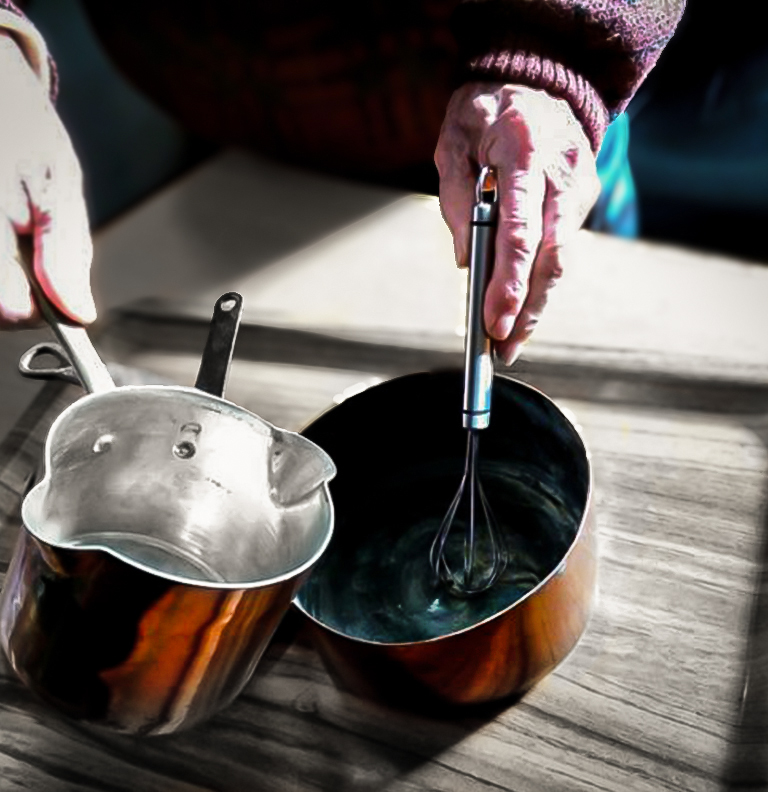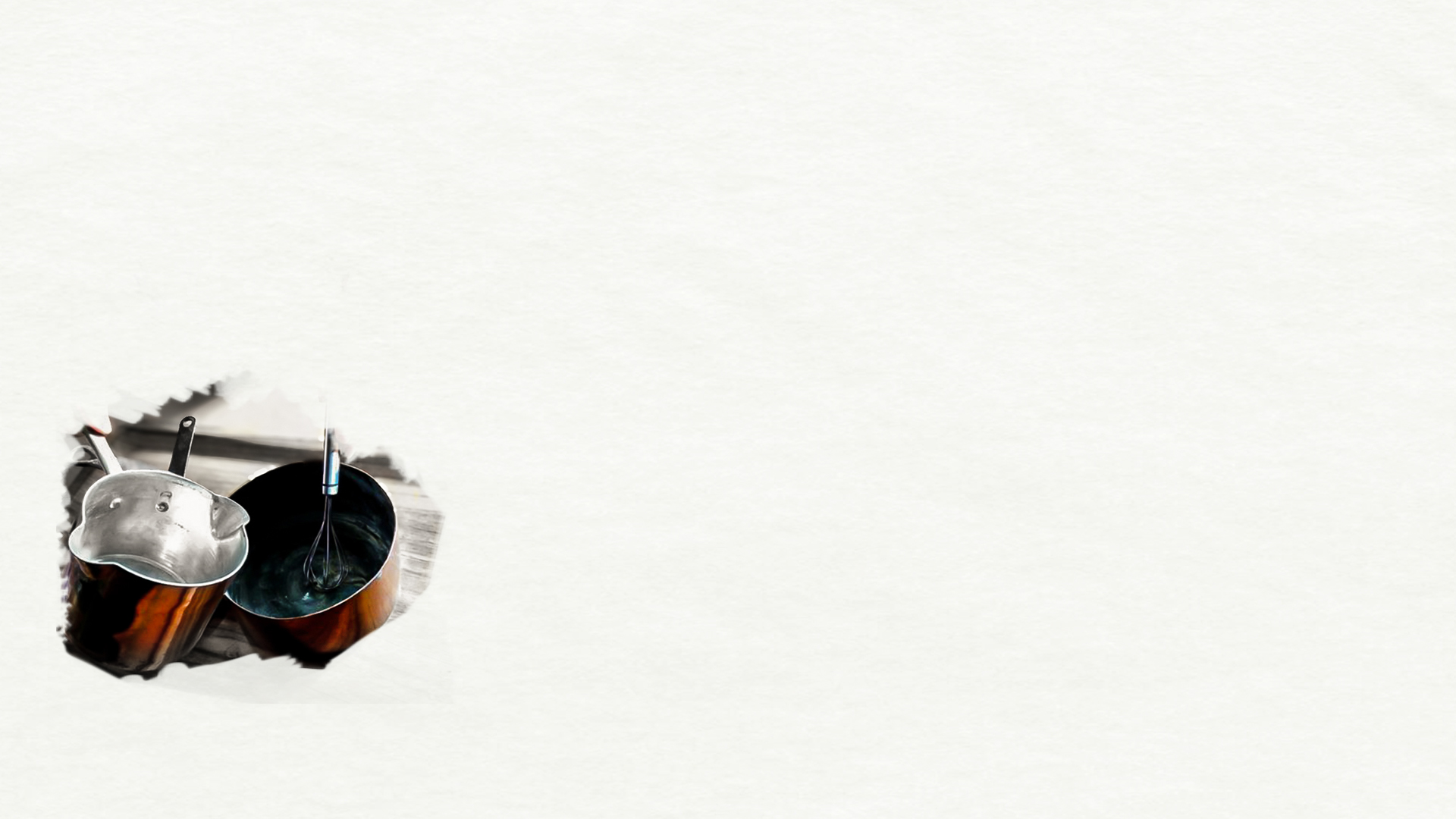Fra tutti gli oggetti esposti nella casa natale (ora museo) del famoso cuoco francese, Auguste Escoffier, a Villeneuve-Loubet, ricordo che due avevano attratto la mia attenzione; si trattava di due piccole casseruole ad un manico di rame stagnato. La loro singolarità era data dalla loro particolare forma: una di esse, del diametro di circa 10 cm. era fornita di due beccucci opposti che permettevano di versare il liquido contenuto da entrambe le parti; grazie a questo semplice accorgimento la casseruola poteva essere indifferentemente impugnata con entrambe le mani, consentendo così al cuoco mancino di amalgamare il composto impugnando la frusta con la mano più idonea
Sicuramente più strana era però l’altra casseruola, che aveva una parete curiosamente piatta.
I cuochi che erano con me non riuscivano ad immaginare il motivo che aveva spinto Escoffier a farsi costruire un simile recipiente. Varie le supposizioni emerse, alcuni sostenevano che l’appiattimento della parete fosse dovuto ad una caduta, altri che fosse stata appositamente studiata per operare in una cucina angusta dove i fornelli erano collocati vicino al muro…Si cercò una soluzione più logica e, ripensando alle caratteristiche del genio gastronomico del grande cuoco, si giunse ad una soluzione plausibile che, se non è proprio vera è, spero, ben raccontata…..


Escoffier, innovatore e codificatore della moderna cucina francese, fu anche un grande inventore di salse che si concatenavano, all’interno di una struttura gastronomica razionale, in preparazioni dalle più semplici alle più complesse. Dai fondi di cottura derivano infatti le salse madri, da queste le salse primarie, quindi le secondarie e così via.
La messa a punto di una nuova salsa richiedeva però la ripetizione di tentativi volti ad ottenere il risultato più equilibrato. L’impiego di casseruole tradizionali, per quanto di piccole dimensioni, avrebbe però comportato un notevole spreco di alimenti, specie se il risultato non fosse stato immediatamente soddisfacente. Per ottenere pochi cucchiai di salsa da assaggiare, sarebbe stato necessario inclinare la casseruola sul fornello, allo scopo di aumentare il livello della limitata quantità di contenuto e di facilitare, in tal modo, il “legamento” della salsa.
Con questa particolare casseruola dal fianco piatto, Escoffier poteva, inclinandola, alzare il livello del poco liquido contenuto e assicurare maggior stabilità al recipiente appoggiandone il manico sul bordo di un’altra piccola casseruola. Il cuoco aveva inoltre entrambe le mani libere per aggiungere ed amalgamare tutti gli ingredienti che riteneva necessari alla formazione di un sapore perfetto, effettuando la “liason”, come lui stesso consigliava, “ au coin du feu”, affinchè l’impatto con il calore fosse il più dolce possibile.
Quelle che vedete non sono naturalmente le originali, le ho fatte rifare, per curiosità mia e vostra, dal mio mastro ramiere italiano.
Eugenio Medagliani, "Calderaio Umanista"
